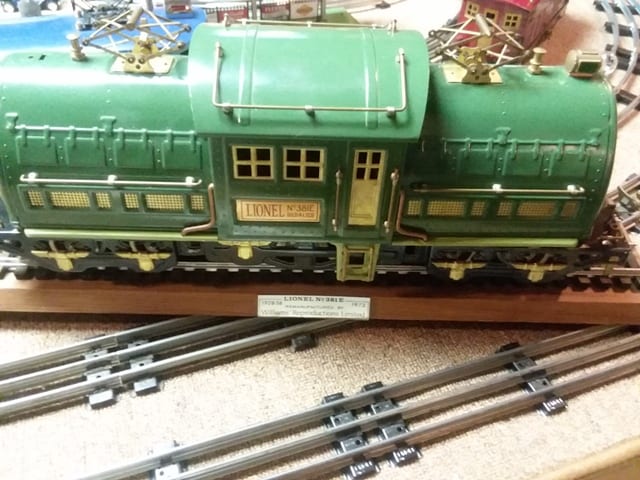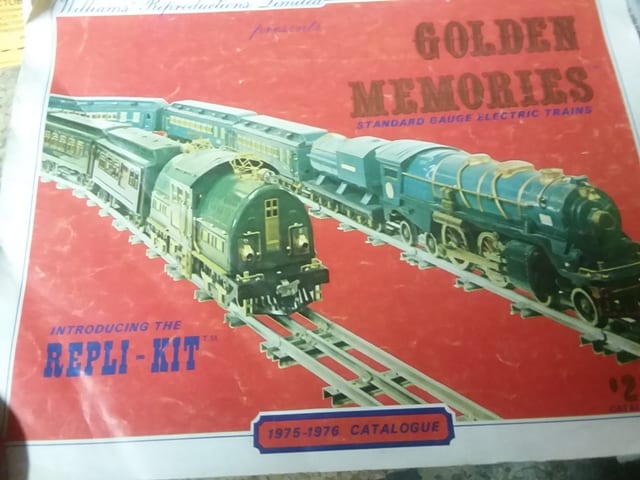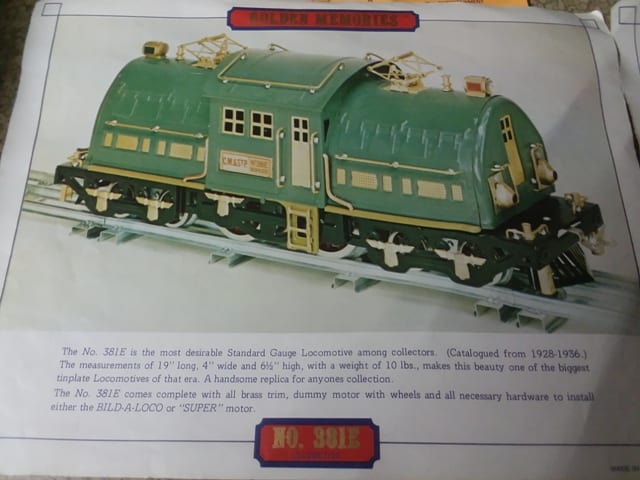On Making a Legend Run Like a Thoroughbred

By John S. Halajko, TCA 84-20653 and Stan Dohm, TCA 18-73269
Let’s turn back the clock to the Vintage Years of the Williams Golden Memories Offerings. The year is 1973. The serious Standard Gauge train operator/collector is starving for the Thoroughbreds: 381E and 400E. Alas, Jerry makes their dreams come true by building his version of these locomotives sans motors. The first run of 300 quickly sells out launching a second run of another 300 units. Some of this second run were unsold and were promoted in the flyer that follows.
At a reasonable cost you got a mint pant job and four new wheels to replace the badly distorted wheels of your salvaged Bild-A-Loco motor. Just re-wheel your salvaged motor (rewire if needed) and drop it in to go. As a sidebar, can anyone provide information on identifying the manufacturer of unlabeled Bild-A-Loco motors?

The first two issues of the Williams 381 (about 300 each issue) came with Lionel plaques as noted in the opening picture and the neat display base (only the first issue of 300). Williams was forced by Lionel to discontinue the practice of using the Lionel name plates and the TCA desired to mark the items as reproductions. Alas, reproduction Lionel trim plates could still be purchased from parts guys. So now you have like new items with reproduction Lionel trim out there in collector land. Stan found that a later version of the 381 was named Chicago, Milwaukee, St. Paul and Pacific.
Stan acquired his Lionel 381 by Williams on eBay at a very reasonable cost. It was missing a set of window frames which we later found inside the cab and a headlight (which we purchased from Jay Stuhl). Note the markings on the neat display base plaque that was offered in the first run of this thoroughbred.

When Stan tried to run his eBay find on the track, the pilot wheels would short out the center rail by climbing the rails on a curve. John first thought that it was the front body tabs interfering with the pilot truck and bent the all four front tabs to allow for much needed clearance. Alas, that was only a part of the issue. It worked better but no cigar.

We next sought expert advice on initiating repairs. Our go-to-guy is Jay Stuhl in Somerset, NJ. So off we go to visit Jay to carefully compare Stan’s version with Jay’s version.

Nothing appeared obvious except that one of Stan’s trucks did not have the same downward force on the track as Jay’s trucks. After a few minutes we discovered a missing spring. Fortunately, Jay had one that John installed which solved the problem.

Note the wheel shorting marks on the above picture. It tells the story of the lack of downward spring tension causing track shorts. So, if you acquire a 381, and find that you have the pilot truck climbing the rails on curves shorting out the center rail at no extra cost, make sure the body tabs are bent to not touch the frame of the truck and that you have all eight (8) truck springs, four for each truck.
Now for the running adventures using Stan’s 054 Standard Gauge curves! The 381’s latch coupler height is setup for the larger series Standard Gauge Cars. Therefore, we used trick of the rubber band to couple up the consist as shown below.

Stan does not yet own a set of matching Lionel or MTH Standard Gauge State Cars for this engine, so we made up consists of Standard Gauge Cars consisting of 400 Series Passenger Cars (shorter than the State Cars by a few inches) and a 213 Freight Car as shown in the videos that follow. The second video has a verbal error identifying Stan’s tan set of Prewar 400 Series Passenger Cars as Lionel State Cars.
The keys to making Standard Gauge Trains run well is to oil the wheels, lubricate the motor and of course use 054 or 072 curves with a transformer that outputs 22 or more volts. Almost all the speed control of this thoroughbred is in the last few volts on the Prewar transformer, say 18 to 25 volts. The Lionel ZW voltage output (limited to a nominal 20 volts) just does not go high enough for good operation with a long lighted consist. Prewar Z transformers output between 23 and 25 volts. The higher the voltage the better. Stan uses a Z transformer to run his Standard Gauge Trains.
Enjoy the videos. Many thanks to Bruce Greenberg for adding the arrows to the pictures for clarity.







